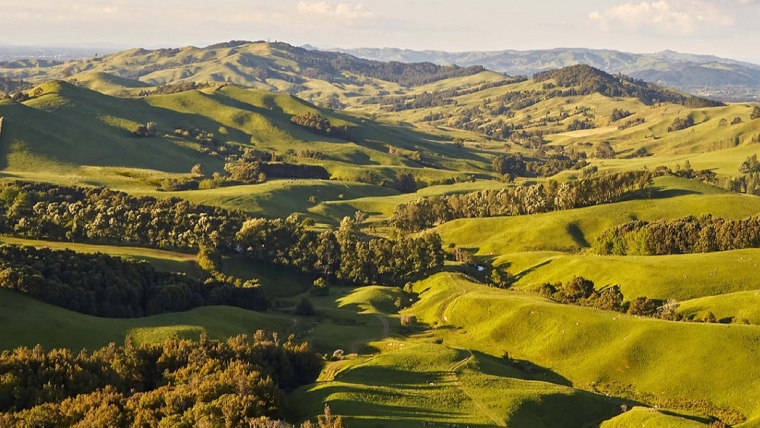
Since 2003, the Pastoral Greenhouse Gas Research Consortium (PGgRc) has invested over $90 million in exploring technology-based solutions that New Zealand pastoral farmers can use to reduce GHG emissions from the sector, while increasing productivity.
During that time, they have built a significant base of valuable scientific knowledge and essential capability, especially in the field of ruminant methane – the powerful GHG produced by ruminant livestock that makes up around 35% of New Zealand’s total emissions.
As the first group in the world to sequence the genome of a ruminant methanogen, the organisms responsible for producing methane in the rumen, the PGgRc opened the door to finding the weaknesses of these organisms. Off the back of this, significant work has been progressed in the field of methane mitigation to benefit the sheep, beef, dairy and deer industries
Genetic selection is now being rolled out to sheep breeders with the PGgRc-funded development of the world’s first breeding value for low methane-emitting sheep – with no negative side effects. Those learnings are now being applied to develop genetic cattle selection.
The PGgRc has also demonstrated the potential of low-emissions feed to reduce methane and built essential knowledge around how that happens, paving the way for low-GHG feeds that will give options to New Zealand farmers.
Some of the most ground breaking work has been in methane inhibitors, with the PGgRc having successfully advanced inhibitors that can be delivered by an intra-ruminal capsule for both sheep and cattle. This work is being further progressed with an international commercialisation partner.
Genetic selection is now being rolled out to sheep breeders with the PGgRc-funded development of the world’s first breeding value for low methane-emitting sheep – with no negative side effects. Those learnings are now being applied to develop genetic cattle selection.
The PGgRc has also demonstrated the potential of low-emissions feed to reduce methane and built essential knowledge around how that happens, paving the way for low-GHG feeds that will give options to New Zealand farmers.
Some of the most groundbreaking work has been in methane inhibitors, with the PGgRc having successfully advanced inhibitors that can be delivered by an intra-ruminal capsule for both sheep and cattle. This work is being further progressed with an international commercialisation partner.
Mark Aspin, the PGgRC general manager, says that every country in the world considers themselves the most efficient. in 1984 New Zealand got rid of subsidies and expected everybody else to follow, but nobody did. R&D investment is mainly the biggest part of our subsidy from the crown. The rest of it rightly or wrongly, we live and die on the on the market return. And so in that sense we were efficient.
“If you looked at it from a point of view of do we feed our animals, the right diet at the right times, you might look at some other levels of efficiency in some markets with a lot more grain and things going in. But I think you know, that is reality. We we are still very, very competitive. And I think that's the other point, it is a competitive world. And we go into a lot of nations that have got a different set of economic drivers and they can subsidise nations and support their agriculture industry.”
“I think science is an interesting thing, I reflect back when we began the PG GRC, where as an investment as a consortium was a five year contract. The scientist at the time said, there's a whole lot of options, you've got feeds, you've got breading, you've got inhibitors, we just need to just fine tune them. And they'll be on the market, and they'll be options. And we very quickly realized that actually, none of those things, when you really tested them did work. And we had to go back to understanding the events, what happens in our ruminant animals in respect, and so we've had to dive into the science we've done we were the first organization New Zealand was the first to completely sequence a rumen methanogen, a genomic sequence.
So, you know, we've advanced the science, and we've really never focused on the rumen and like we have and we have the tools, so I can't believe we can achieve it. But the reality is you've got to get a real result. And so if it doesn't work, don't tell someone it does work. Until you know, we've proven in the four areas of methane we worked in, we've shown that we can select for genetic selection for sheep, and we think we don't see any reason why that won't work in cattle and deer and the cattle work has been done and dairy at the moment has been kind of tested. And so that's that's underway. There’s no other reason the other species won't work. We've got inhibitors, we know we can find inhibitors that just target methanogens and reduce methane, can we make them potent enough that we could deliver them in a capsule or a slow release mechanism? So that they could last in the Rumen? That's kind of the chemistry of them once we find them, So we we think that's doable. And there are some as we've talked about, we've looked at different pastures and they are really tricky, but we do know that brassicas, brassica rate fed as a full diet to ruminant animal reduce methane emissions by 25%. you don't farm a farm brassicas you have a six week crop. So you know, there impacts are major when they are being fed, but they're not going to answer our question. And in the vaccine, we've seen it in pure cultures, and we've seen it but we haven't seen in the rumen animal. So those kind of four technologies have advanced. And we'll be rolling out methane genetics. And so I don't believe we won't be able to do it, but you got to get it right.
There is a lot of work going into this area and we really need to thank our industry bodies and the science community for their level of investment and commitment in ensuring farmers are not only getting a fair crack of the whip in terms of policy, but constantly driving the science and innovation all for better outcomes for New Zealand farmers, which in tern means better outcomes for New Zealand. We are a farming nation, driven by export revenue, lets not lose sight of that.
Listen to the podcast to hear the full story
Angus Kebbell is the Producer at Tailwind Media. You can contact him here.
3 Comments
Time to end the undeclared war on farming then. "Even more strikingly, if an individual herd’s methane emissions are falling by one third of one percent per year (that’s 7/2100, so the two terms cancel out) – which the farmers I met seemed confident could be achieved with a combination of good husbandry, feed additives and perhaps vaccines in the longer term – then that herd is no longer adding to global warming.
I've read it once and the initial impression is it is very badly written. Certainly by the standards of Interest.co.nz Not misleading but fairly simple things are hard to grasp. I'll have to re-read it.
Inhibitors... really? Wow, take a step back and look at what your doing. Giving sheep and cows pharmaceutical drugs to prevent methanogenic bacteria producing a bit of methane which has virtually no effect on the environment. Counterproductive effort. It's no good for the animal, no good for humans, no good for the environment. All it's good for is environmental virtue signaling, and generating research grants.

We welcome your comments below. If you are not already registered, please register to comment
Remember we welcome robust, respectful and insightful debate. We don't welcome abusive or defamatory comments and will de-register those repeatedly making such comments. Our current comment policy is here.